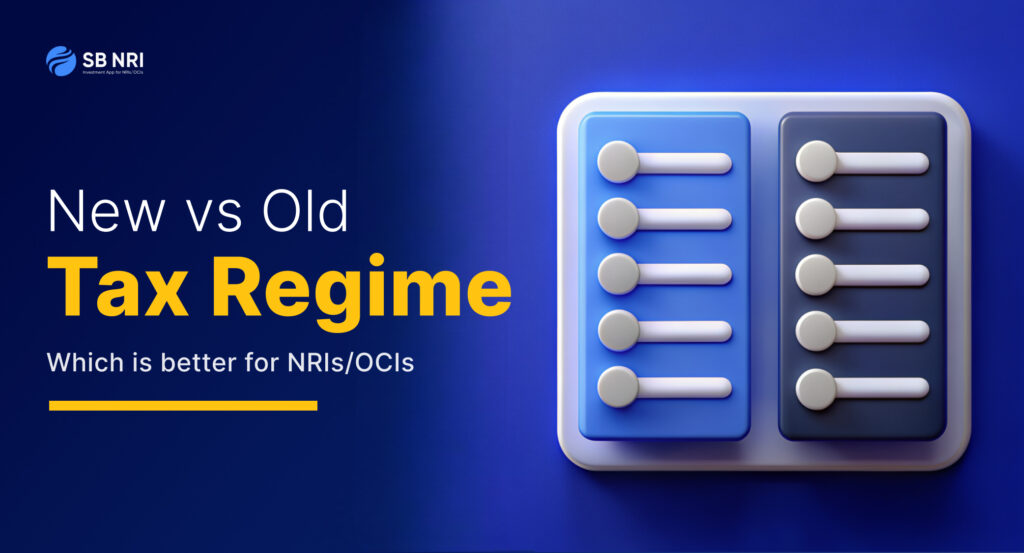
With the introduction of the new tax regime in the 2020 Budget, taxpayers now have two options to choose from: the old tax regime with its various exemptions and deductions, and the new tax regime with lower tax rates but no exemptions. In this blog, we’ll explore the key differences between the new vs old tax regime to analyze which one might be better suited for Non-Resident Indians (NRI) or Overseas Citizen of India (OCI).
NRI Income Tax Slab Rates for AY 2024-25 (FY 2023-24) – New Tax Regime & Old Tax Regime
| Income Tax Slab | Old Regime Slab Rates for FY 23-24 (AY 24-25) |
|---|---|
| Up to Rs. 2.50 lakh | Nil |
| Rs. 2,50,000 -Rs. 5,00,000 | 5% |
| Above Rs. 5 lakh to Rs. 6 lakh | Rs. 12,500 + 20% |
| Above Rs. 6 lakh to Rs. 7.50 lakh | Rs. 12,500 + 20% |
| Rs. 7.50,000 to Rs. 9,00,000 | Rs. 12,500 + 20% |
| Rs. 9,00,000 to Rs. 10,00,000 | Rs. 12,500 + 20% |
| Rs. 10,00,000-Rs. 12,00,000 | Rs. 1,12,500 + 30% |
| Rs. 12,00,000-Rs. 12,50,000 | Rs. 1,12,500 + 30% |
| Rs. 12,50,000-Rs. 15,00,000 | Rs. 1,12,500 + 30% |
| Above Rs. 15,00,000 | Rs. 1,12,500 + 30% |
| Income Tax Slab | New Regime Slab Rates for FY 23-24 (AY 24-25) |
|---|---|
| Up to Rs. 3 lakh | Nil |
| Rs. 3,00,000 -Rs. 6,00,000 | 5% (Rebate u/s 87A available) |
| Rs. 6,00,001 lakh to Rs. 9,00,000 | 10% (Rebate u/s 87A available for taxable income up to 7 lacs) |
| Rs. 9,00,001 to Rs. 12,00,000 | 15% |
| Rs. 12,00,001 to Rs. 15,00,000 | 20% |
| Above Rs 15,00,000 | 30% |
New vs Old Tax Regime: Deductions & Exemptions
| Exemptions | Old Tax Regime | New Tax Regime |
|---|---|---|
| HRA exemption | Available | Not available |
| Standard deduction | Available | Available |
| Professional Tax | Available | Not available |
| Interest on housing loan | Available | Not available |
| Deduction under 80C LIC, PE, ELSS, ULIP, home loan principal repayment, tuition fees, Sukanya Samridhi, etc. | Available | Not available |
| Own contribution in NPS | Available | Not available |
| Medical insurance | Available | Not available |
| Disability deduction u/s 80U | Available | Not available |
| Interest on education loan | Available | Not available |
| Interest on e-vehicle loan | Available | Not available |
| Donation to fund/ trust | Available | Not available |
| Donation to political party | Available | Not available |
| Saving bank interest deduction up to Rs. 10,000 | Available | Not available |
The new tax regime allows the taxpayers to save more taxes. However, you can’t claim any deductions, other than standard deduction, under the new tax regime. On the other hand, you are eligible for several deductions under the old income tax regime, including an upfront deduction of Rs. 50,000. Consequently, it brings your taxable income, with investments, down significantly.
Also read: ITR Filing for NRIs AY 2024-25: Step-by-Step ITR Filing Process
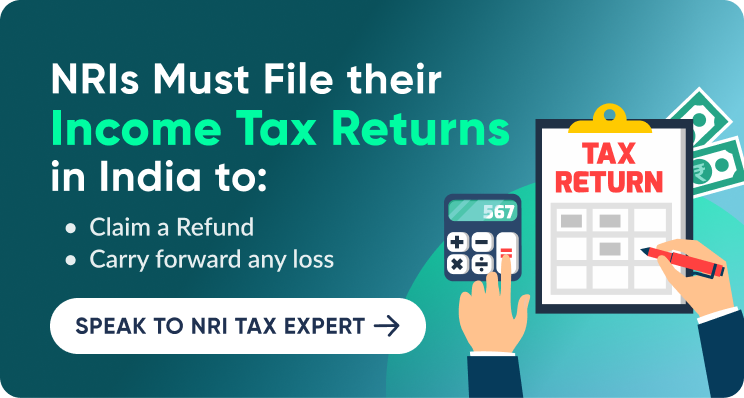
For example, if your salary is Rs. 9 lakh a year, you will have to pay Rs. 45,000 as tax because you can’t claim deductions to bring down the taxable income under the new income tax regime. In contrast, someone opting for the old tax regime can claim several exemptions u/s 80C & 80D, interest on home loan, etc. to reduce their taxable income to Rs. 5,00,000 and the tax amount to zero, on an annual income of Rs. 9 lakh.
Also read: New Rules for NRI Taxation in India FY-2023-24
Key Considerations for NRIs/OCIs when Filing ITR
1. Income Sources
NRIs and OCIs often have income from multiple sources, including foreign income, rental income from properties in India, interest on bank deposits, and investments. Understanding which tax regime benefits them more depends on the nature and amount of their income.
Also read: What is Sec 87A of the Income Tax Act? Can NRIs avail it?
2. Exemptions and Deductions
Under the old regime, NRIs/OCIs can benefit from various deductions like those under Section 80C, 80D, and interest on home loans. These can significantly reduce taxable income. If an NRI/OCI has substantial deductions, the old regime might be more beneficial.
Also read: What is Section 54F of Income Tax Act? How can NRIs benefit from it?
3. Simplified Filing
The new tax regime simplifies the tax filing process by eliminating the need to claim multiple exemptions and deductions. For NRIs/OCIs who prefer a straightforward approach without the hassle of extensive paperwork, the new regime might be appealing.
4. Tax Planning and Investments
The old regime encourages tax-saving investments in instruments like PPF, NSC, and ELSS. NRIs/OCIs who are keen on long-term savings and investments might prefer the old regime to maximize their deductions.
Also read: Is ELSS Taxable after 3 Years?
5. Residency Status and Global Income
NRIs and OCIs need to consider their residency status and global income. The old regime might offer more flexibility in managing global income and tax liabilities, while the new regime’s lower rates could benefit those with higher Indian incomes.
Also read: 5 Tips for NRIs Filing Income Tax Returns in India
Scenario Analysis of New vs Old Tax Regime for NRIs/OCIs
Example 1: NRIs/OCIs with Limited Deductions
An NRI with an annual income of ₹15 lakh, minimal deductions, and no significant investments in tax-saving instruments might find the new tax regime more beneficial due to the lower tax rates.
Example 2: NRIs/OCIs with Significant Deductions
An OCI with an annual income of ₹15 lakh, substantial investments in PPF, EPF, and other Section 80C instruments, and deductions under Section 80D and home loan interest might benefit more from the old tax regime.
Also read: Penalty for Non-filing of ITR by Due Date: Know all the Rules
New vs Old Tax Regime: Which is better for you?
People with higher annual incomes can opt for the old income tax regime if they invest in long-term tax savings schemes and have a home loan. The new income tax regime looks a good fit if you don’t have investments or loans to claim deductions. The choice between the new and old tax regimes depends on individual circumstances, including income sources, deductions, investments, and residency status. NRIs and OCIs should carefully evaluate their financial situation, calculate their tax liabilities under both regimes, and consider their long-term financial goals before making a decision.
Also read: Types of ITR forms for NRIs
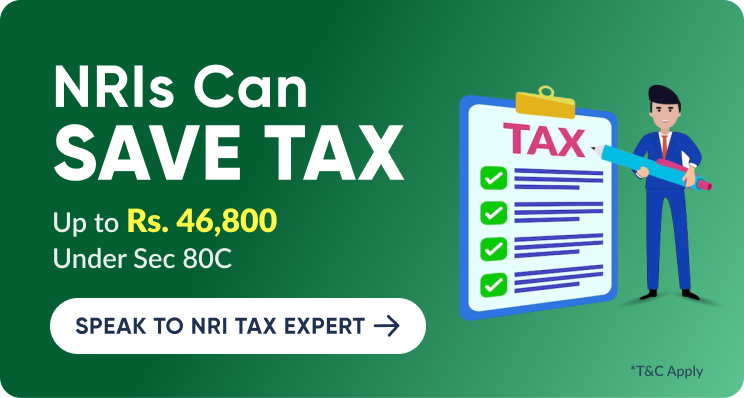
When is the Last Date or Due Date to fill ITR?
The last date or due date to fill your Income Tax Return(ITR) in India is July 31st for individuals, Non-Resident Indians (NRI) or Overseas Citizen of India (OCI), and HUFs. With the announcement of new tax regimes, there are two tax regimes you can choose from, new tax regime and old tax regime. Any individual, NRI/OCI, or HUF needs to select the right tax regime as per their suitability while filing an ITR.
However, it is also to be noted that from this year onwards, the New Tax regime would be the default tax regime for ITR filing unless the assessee selected another regime. To guarantee your option is recorded and to avoid penalties, don’t forget to file by July 31st. If you do not file ITR by due date then you will be liable for penalty for non-filing of ITR.
Calculate your TDS Refund with SBNRI’s TDS Refund Calculator
A TDS refund is the process of reclaiming the excess tax deducted at source by the payer if the actual tax liability of the taxpayer is lower than the TDS deducted. This situation typically arises when the income tax calculated on the total income is less than the TDS already deducted. To claim a TDS refund, taxpayers need to file an income tax return (ITR). The Income Tax Department processes the ITR and verifies the details. If the tax department finds that the TDS paid is more than the actual tax liability, the excess amount is refunded to the taxpayer.
You can easily find out how much tax refund you can get by calculating your TDS Refund from this TDS Refund Calculator.
Access SBNRI’s Exclusive NRI Taxation Guide
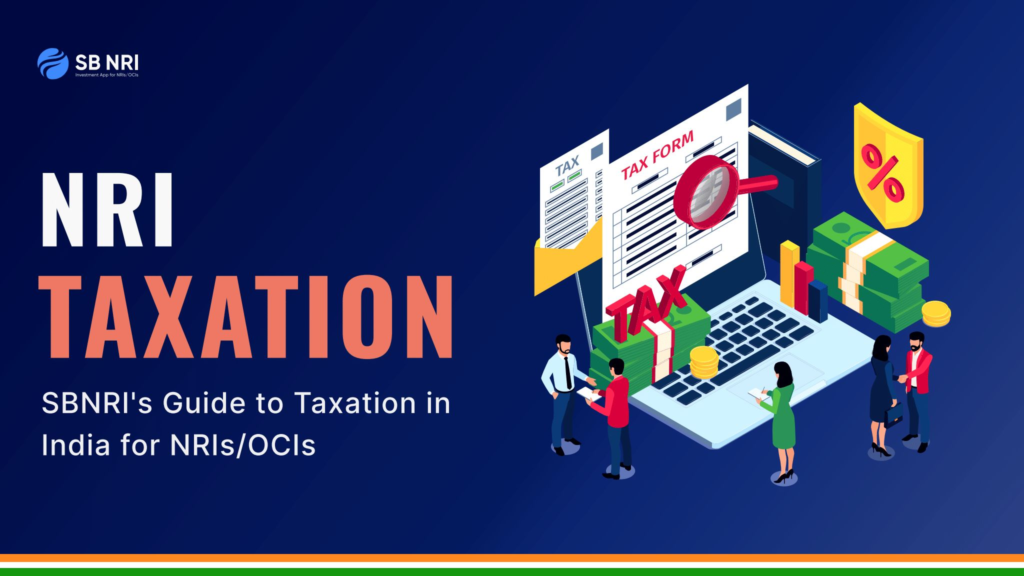
NRIs and OCIs can now access SBNRI’s exclusive NRI Taxation Guide covering in-depth information about DTAA, Gift Tax, Rental Income Tax, ITR Filing, Types of ITR Forms for NRIs, Capital Gain Tax, Income Tax, and more. The report will help you understand India taxation on mutual funds, other asset classes and how you can comply with the regulations.
Access NRI Taxation Guide here
Looking for NRI ITR Filing? Connect with SBNRI NRI Tax Expert CA Today!
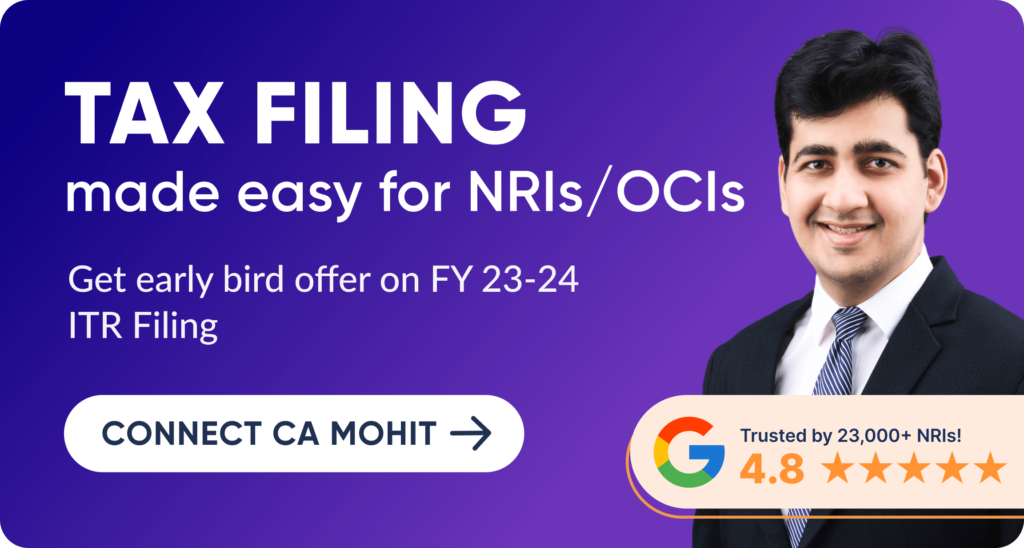
At SBNRI, we have simplified ITR filing for NRIs/OCIs through a smooth digital journey. Be it Basic Filing, Advanced Filing (includes Capital Gain, etc.), or Premium Filing (Foreign Income), we can help you assess the right computation and lower your tax liability.
“We’ve helped over 500+ NRIs/OCIs file ITR returns and more than 25,000+ across other taxation services last financial year and we’d love to help you out too”
You can download SBNRI App or connect with NRI Tax Expert team directly via the button below.
FAQs
What is the basic difference between the old and new tax regimes?
- Old Tax Regime: Allows multiple exemptions and deductions such as HRA, LTA, and Section 80C deductions.
- New Tax Regime: Offers lower tax rates but does not allow most exemptions and deductions, except for a few like the standard deduction and employer’s contribution to NPS.
Can I claim House Rent Allowance (HRA) in the new tax regime?
No, the HRA exemption is not available under the new tax regime. It is only available under the old tax regime.
Is the standard deduction of Rs. 50,000 available in the new tax regime?
Yes, from AY 2024-25 onwards, the standard deduction of Rs. 50,000 is available in both the old and new tax regimes.
Can I claim deductions under Chapter VIA (such as Section 80C, 80D, 80G) in the new tax regime?
No, in the new tax regime, most deductions under Chapter VIA cannot be claimed, except for a few specific ones like 80CCD(2) and 80JJAA.
Can I claim a deduction for interest on borrowed capital for a self-occupied property?
No, deductions for interest on borrowed capital for self-occupied property are not allowed in the new tax regime. This deduction is available only under the old tax regime.
Are there any special advantages for senior citizens in the new tax regime?
In the old tax regime, senior citizens have a higher basic exemption limit (Rs. 3 lakh for senior citizens and Rs. 5 lakh for super senior citizens). In the new tax regime, there is no special advantage, but no tax is payable on income up to Rs. 7 lakh.
Is there any difference in tax rebate under Section 87A between the old and new tax regimes?
Yes, under the old tax regime, the rebate is up to Rs. 12,500 for income up to Rs. 5 lakh. In the new tax regime, the rebate is up to Rs. 25,000 for income up to Rs. 7 lakh.
Do I need to file Form 10-IEA to opt for the old tax regime?
Yes, if you have business or professional income, you need to file Form 10-IEA to opt for the old tax regime. For those without business income, you can opt for the old tax regime by simply selecting the appropriate option in the ITR form without filing Form 10-IEA.
Can I switch between the old and new tax regimes every year?
Taxpayers with business income cannot switch between the regimes every year once they opt out of the new regime. They can only revert to the new regime once. Taxpayers with non-business income can switch between the old and new tax regimes every year.
What if I want to switch back to the old tax regime after opting for the new regime in previous years?
The new tax regime is the default regime for AY 2024-25. Any previous actions regarding the choice of regimes will not apply from AY 2024-25. You will need to submit Form 10-IEA again to opt for the old regime.



